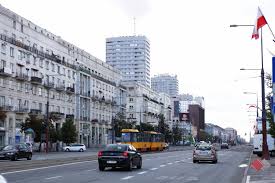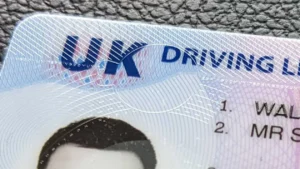
ul. Marszałkowska is one of the most iconic and busiest streets in Warsaw. Stretching through the city center, it is a major thoroughfare for cars, trams, buses, cyclists, and pedestrians. With its rich history and proximity to key landmarks, it’s no surprise that the street often becomes overcrowded. Fortunately, there are simple, practical ways to reduce congestion and make ul. Marszałkowska more enjoyable for everyone. From smart infrastructure planning to policy changes and public engagement, a combination of strategies can ease the pressure on this vital artery.
Encourage Public Transport Usage
Improve Frequency and Reliability
One of the most effective methods to reduce foot and vehicle traffic on ul. Marszałkowska is by enhancing public transport. Trams and buses that operate along this route should have increased frequency, especially during peak hours. A shorter waiting time encourages more commuters to choose public transport over personal vehicles.
Prioritize Public Transport Lanes
Establishing dedicated lanes for trams and buses can improve their efficiency and reduce travel time. When public transport becomes the fastest and most convenient option, more people are likely to leave their cars at home. This change not only reduces traffic but also minimizes pollution and noise on ul. Marszałkowska.
Upgrade Tram and Bus Stops
Comfortable, clean, and safe tram and bus stops encourage more people to use public transport. Covered waiting areas, digital screens showing real-time arrivals, and accessibility features for people with disabilities make public transit a more appealing choice.
Promote Alternative Transportation
Expand Cycling Infrastructure
Creating more bike lanes along ul. Marszałkowska would encourage residents and visitors to cycle rather than drive. These lanes should be clearly marked, separated from vehicular traffic, and safely integrated with intersections and pedestrian crossings.
Launch Public Bike Sharing Programs
Enhancing the presence and convenience of public bike sharing stations can motivate people to use bicycles for short commutes. Making stations available at key entry and exit points along ul. Marszałkowska increases accessibility and usability.
Support E-Scooters and Micro-Mobility
Micro-mobility options like e-scooters are becoming increasingly popular. Designated scooter lanes and organized parking zones can reduce sidewalk clutter and help people move around without adding to congestion.
Redesign the Street Layout
Widen Sidewalks
One simple way to ease pedestrian congestion is to widen sidewalks. This gives people more space to walk comfortably, reducing the feeling of overcrowding. Widened sidewalks also improve accessibility for strollers and wheelchairs.
Introduce Pedestrian-Only Zones
Certain parts of ul. Marszałkowska could be converted into pedestrian-only zones during specific hours or permanently. This promotes walking and cycling, cuts down on noise, and makes the street a more pleasant space to spend time in.
Add Green Spaces and Urban Furniture
Green areas, benches, and public art can make the environment more inviting and encourage people to linger in specific parts of the street rather than crowding the main pathways. Strategic placement of these elements can help disperse foot traffic more evenly.
Implement Smart Traffic Management
Real-Time Traffic Monitoring
Installing sensors and cameras to monitor traffic flow in real time allows for data-driven decisions. Authorities can adjust traffic lights, open or close lanes, or reroute vehicles based on live conditions to avoid build-ups on ul. Marszałkowska.
Promote Off-Peak Travel
Encouraging businesses and institutions to stagger work hours can help distribute travel across the day instead of concentrating it during rush hours. This change would reduce pressure on ul. Marszałkowska during the most crowded times.
Use Mobile Apps and Digital Signage
Apps and electronic boards can inform users about congestion levels, parking availability, or alternative routes. This empowers drivers to avoid ul. Marszałkowska during high-traffic periods and opt for less busy routes.
Encourage Mixed-Use Development
Combine Residential, Commercial, and Office Spaces
Creating mixed-use buildings along ul. Marszałkowska means people can live, work, and shop in the same area. This reduces the need to travel long distances and lowers the volume of daily commuters, ultimately decreasing crowding.
Incentivize Local Shopping
Supporting local businesses within walking distance helps reduce the need for residents to travel far for goods and services. This keeps more people in their neighborhoods and lessens the demand on central areas like ul. Marszałkowska.
Educate and Engage the Public
Public Awareness Campaigns
Informing the public about the benefits of using public transport, walking, or cycling can shift habits over time. Campaigns can highlight environmental benefits, health advantages, and time savings.
Community Involvement in Planning
Involving residents in urban planning initiatives can lead to better outcomes. Public input can reveal issues that top-down planning might overlook and foster a sense of shared responsibility in keeping ul. Marszałkowska accessible and vibrant.
Reward Eco-Friendly Behavior
Cities can introduce incentive programs that reward people for choosing sustainable transport modes. For example, points systems, discounts at local stores, or even free transit days can encourage people to leave their cars at home.
Improve Parking Strategy
Limit On-Street Parking
Reducing on-street parking along ul. Marszałkowska opens up space for wider sidewalks, bike lanes, or green areas. It also discourages car usage in favor of more efficient modes of transport.
Build Park-and-Ride Facilities
Park-and-ride locations at the edge of the city can help drivers avoid entering congested central areas. These hubs should be linked to efficient tram or bus routes that run through ul. Marszałkowska.
Introduce Dynamic Pricing
Variable parking fees based on demand can discourage long-term parking in busy zones. Higher prices during peak hours motivate drivers to park in less crowded areas or use alternative transport.
Final Thoughts
Reducing congestion on ul. Marszałkowska does not require massive infrastructure changes overnight. Instead, a combination of practical measures—enhancing public transport, redesigning street space, managing traffic intelligently, and engaging the public—can gradually transform the street into a more livable and less crowded space. By taking a people-first approach and investing in sustainable mobility options, ul. Marszałkowska can retain its importance while becoming more enjoyable for everyone who uses it.

